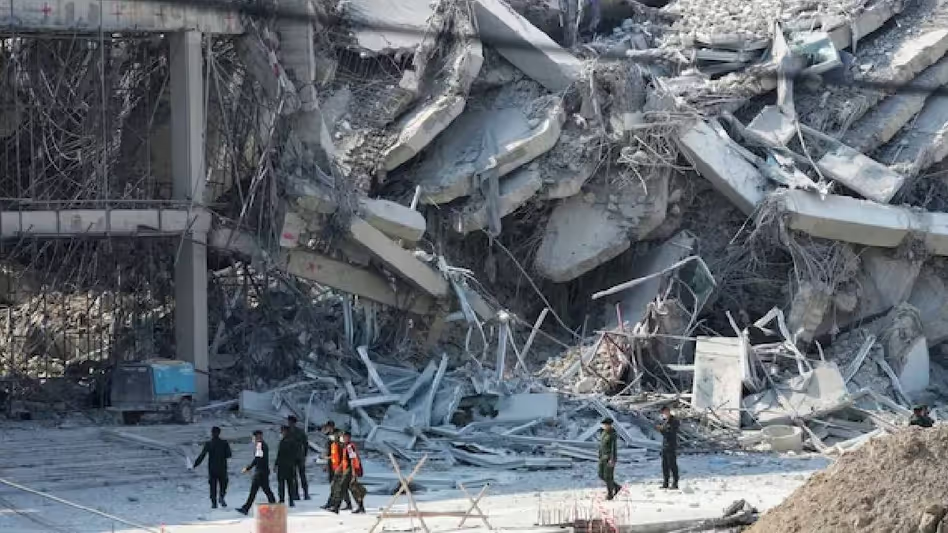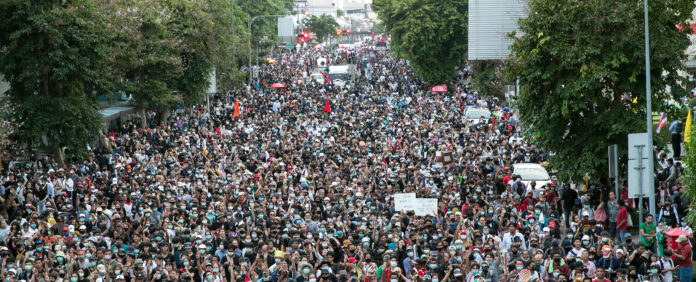Protests have historically provided a platform for citizens to express dissatisfaction and advocate for change. While they can be effective tools for social justice and political reform, ongoing protests can also negatively impact individuals, communities, and the nation overall. No country prohibits people from peacefully protesting and voicing their demands; however, violence during protests and the negative impact of repeated demonstrations on the nation and society are not tolerated anywhere in the world.
Governments may respond to sustained protests with heavy-handed tactics, eroding civil liberties. In Hong Kong, the response to pro-democracy protests involved a crackdown on freedoms of speech and assembly, significantly diminishing democratic rights for residents. The Black Lives Matter protests following George Floyd’s death in 2020 sparked a global movement against racial injustice, but their persistence also led to considerable backlash, with some communities experiencing heightened tensions between protesters and law enforcement, as well as economic disruptions affecting local businesses.
The Gilets Jaunes (Yellow Vests) movement in Frbce began as a protest against fuel taxes but expanded into a broader critique of economic inequality. While these protests highlighted important issues, they also resulted in significant violence and property damage, straining the relationship between citizens and the government and negatively impacting local businesses.
To understand the current landscape of protests in Pakistan, it’s important to consider the historical context. Since its independence in 1947, Pakistan has faced political instability and civil unrest. Notable protest movements include the 1977 anti-government protests, the 2007 lawyers’ movement, and the 2014 Pakistan Tehreek-e-Insaf (PTI) protests. The protests led by the Pakistan National Alliance against Prime Minister Zulfikar Ali Bhutto’s government illustrated how civil unrest can destabilize political structures. Widespread protests against Gen Muhammad Zia-ul-Haq’s regime further polarized society and laid the groundwork for future unrest.
The lawyers’ movement was a pivotal moment in Pakistan’s political history, aiming to restore Chief Justice Iftikhar Muhammad Chaudhry and ultimately leading to the restoration of democracy. However, these protests also exposed deep societal divides and institutional weaknesses. The 2014 protests led by Imran Khan resulted in significant instability and confrontations with state institutions. Urban protests, particularly in cities like Karachi and Lahore, can create a disconnect with rural populations, who may feel alienated from the issues at hand, breeding resentment and deepening societal fractures.
Repeated protests in cities such as Islamabad and Lahore often escalate into violence. For instance, during the 2017 Faizabad sit-in, clashes between protesters and law enforcement resulted in deaths and injuries, normalizing aggressive tactics among both protesters and police. Over time, frequent violent confrontations can desensitize communities to aggression, fostering a culture in which aggressive protest tactics are deemed acceptable. This normalization can perpetuate cycles of violence and conflict. Living in an environment where protests are commonplace can induce chronic stress for many residents. The uncertainty and fear of potential violence can particularly affect vulnerable populations, such as children and the elderly, contributing to anxiety disorders.
In Pakistan, the already limited mental health infrastructure can become overwhelmed by the ongoing stress from repeated protests, leading to an increase in mental health issues and placing further strain on the healthcare system. Protests often result in confrontations with law enforcement, which can create a sense of distrust among citizens. When police responses to protests are heavy-handed, it reinforces the perception that law enforcement is not a protector, but rather an adversary.
Repeated civil unrest can also deter foreign investment, as investors typically seek stable environments. This perception of Pakistan as a risky investment destination can stifle economic growth and development.
Protests can heavily impact the tourism industry, which is crucial for economic growth. Frequent unrest may dissuade tourists, resulting in economic losses for businesses that rely on tourism, particularly in historically rich cities like Lahore and Islamabad. The government often allocates substantial resources to manage protests, including increased police presence and security measures, diverting funds from essential services like education and healthcare, thereby affecting overall development.
Any protest leaders in Pakistan seem more focused on destabilizing the country and undermining its peace for personal interests or agendas aligned with adversaries. The people of Pakistan have rejected these elements and are calling for strict actions against all anti-state factions and their so-called leadership.
After violent protests, the costs of property damage and reconstruction can strain the national budget. For example, the aftermath of the 2017 Faizabad sit-in required considerable financial resources for cleanup and damage control. Prolonged protests can lead to layoffs in affected industries, particularly in retail and services. Many individuals in Pakistan work in the informal sector, which is especially vulnerable to disruptions caused by protests, leaving workers without support during unrest and worsening poverty and economic instability.
A continuous state of unrest can lead to political gridlock, preventing the government from implementing necessary reforms. For instance, during the PTI protests, key legislative initiatives were stalled as the focus shifted to managing the protests. If citizens perceive that protests do not lead to meaningful change, they may become disillusioned with the political process, resulting in decreased voter turnout and civic engagement over time. Ongoing protests can create a power vacuum that extremist groups may exploit. The rise of radical factions after political unrest is concerning, as these groups can leverage societal grievances to gain support. Young people disillusioned by the political system may be particularly susceptible to recruitment by extremist groups, especially if they view protests as ineffective.
The current protests and calls for further demonstrations in Pakistan and AJK are part of this ongoing trend. These protests appear designed to undermine the economy, education, tourism, healthcare, law and order, and overall peace in Pakistan and AJK. They do not address core issues but instead serve the personal interests of certain so-called leaders. Pakistan’s political landscape has long been tainted by accusations of self-serving behaviour by leaders, leading to public frustration as citizens feel that politicians prioritize their own gains over the needs of the nation. Political dynasties have taken root, fostering a system where loyalty to family and party is prioritized over accountability to voters.
A key issue is the short-term focus of many politicians. As elections approach, there is often a rush to implement populist policies that provide immediate benefits, instead of tackling long-term structural problems. This narrow perspective is often motivated by the need to secure votes for the next election cycle, leaving fundamental issues unresolved.
Corruption continues to be a widespread problem. The absence of effective accountability mechanisms exacerbates this. Despite various anti-corruption campaigns, many politicians escape punishment, creating a culture of impunity that discourages the electorate and reinforces the belief that self-interest prevails. Political discourse in Pakistan is often marked by divisiveness, with parties resorting to mudslinging and personal attacks instead of constructive policy debates. This atmosphere diverts attention from critical national issues and fosters a polarized society where leaders exploit divisions for their own benefit. Rather than coming together for the common good, politicians often concentrate on consolidating their power.
The media in Pakistan plays a dual role; it can hold politicians accountable and highlight public concerns, but it can also sensationalize stories and contribute to misinformation. A responsible media landscape is vital for promoting transparency and accountability. Similarly, a vibrant civil society can mobilize citizens to demand better governance, pushing politicians to align their interests with those of the public.
Pakistan faces a multitude of challenges. From economic difficulties to social issues, these are interconnected and require comprehensive strategies for effective resolution. The economy has long struggled with instability, marked by high inflation, rising debt levels, and persistent trade deficits. The country heavily depends on remittances and foreign aid, which can be volatile and subject to global economic changes. Additionally, a narrow tax base and insufficient investment in key sectors hinder sustainable growth. The energy crisis, worsened by mismanagement and inadequate infrastructure, complicates the economic situation, resulting in frequent power outages that disrupt both industries and households.
Political instability is another significant challenge for Pakistan. Frequent government changes, along with political turmoil and corruption, undermine public trust in institutions. The absence of a cohesive political strategy often leads to short-term policy decisions that overlook long-term challenges. This instability not only affects governance but also deters foreign investment, which is crucial for economic development.
It’s essential to recognize that Pakistan faces numerous challenges, making it unsustainable to endure prolonged protests over minor or irrelevant issues. Security threats, including terrorism and sectarian violence, pose serious risks to the country’s stability. Pakistan has been targeted by various extremist groups, which endanger national security and hinder economic progress. The education sector also faces significant challenges, such as low enrollment rates, high dropout rates, and inadequate infrastructure. Many children, particularly girls, are denied access to quality education, resulting in a considerable skills gap in the workforce. This gap hinders economic growth and innovation, making it difficult for the country to compete in an increasingly globalized economy. The healthcare system in Pakistan is characterized by disparities in access and quality; urban areas may have better facilities, while rural populations often encounter significant obstacles to receiving care. Additionally, environmental degradation, such as water scarcity, air pollution, and deforestation, poses a serious threat to Pakistan’s sustainability. The impacts of climate change, such as flooding and drought, have become increasingly severe, disrupting agriculture and displacing communities. As one of the most vulnerable countries to climate change, Pakistan needs proactive measures to mitigate these effects and encourage sustainable practices.
Social inequality is a critical issue in Pakistan, with a substantial portion of the population living below the poverty line. Wealth disparities and unequal access to resources contribute to social unrest and hinder economic mobility. Poverty alleviation programmes must prioritize empowering marginalized communities, promoting gender equality, and ensuring access to essential services like education and healthcare.
Many protest leaders in Pakistan seem more focused on destabilizing the country and undermining its peace for personal interests or agendas aligned with adversaries. The people of Pakistan have rejected these elements and are calling for strict actions against all anti-state factions and their so-called leadership.























